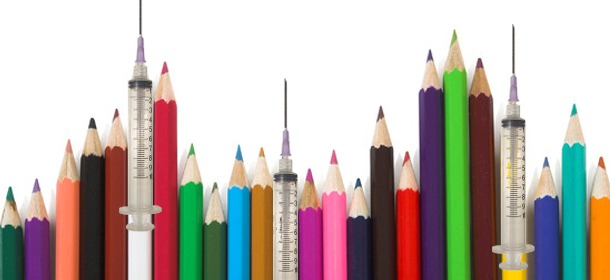Featured
That ‘Organic’ Peanut Butter Might Be Doing Irreparable Harm
If you don’t want to end up popping pills and feeling miserable, then it’s time to stop reading labels and start eating natural foods. The labels lie! They hide the truth. Real food doesn’t come from boxes. It comes from fields.
Definitions of organic can often be inadequate, with peanut butter as a prime example. Most peanut butter labeled as organic can do immense harm to health. It isn’t that there’s anything inherently wrong with peanuts. It’s the way that the peanut butter is processed.
If the oil in peanut butter isn’t sitting at the top of the jar, then you should leave it on the shelf. If the oil doesn’t separate, it’s been hydrogenated. Hydrogenated oils are trans fats. The usual excuse is that it’s what customers want—but would most people object to mixing the oil into the mashed peanuts if they knew how harmful trans fats can be?
More importantly, why would producers be interested in spending the extra money involved in hydrogenation of peanut butter? You can be fairly sure that the public would be retrained to be happy with oil separating if there weren’t an advantage for them. After all, they had no trouble getting people to accept bananas that look less than perfect when it was to their advantage. The primary reason for hydrogenation is to lengthen shelf life. Longer shelf life translates into bigger profits.
So, Why Doesn’t the Label Show Trans Fats?
Agribusiness, with the full cooperation of your government, has ways of lying to get around the trans fat label on foods. Two tricks are employed in peanut and other foods.
Serving Size Trick
In the case of peanut butter—and other foods—one simple trick is to indicate trans fats only according to their so-called “serving size”.
If a 16 ounce jar of peanut butter contains 6.5 grams of trans fat, the label will state that it contains none! And it’s completely legal.
A peanut butter serving size is defined as two tablespoons, or 32 grams. A 16 ounce jar of peanut butter is about 454 grams, or about 14 servings. 6.5 grams of trans fat per jar comes to .45 grams of trans fat per serving.
The labeling law says that when there’s less than .5 grams of trans fat per serving, it can not only be unlabeled, but the label can state that it has no trans fat!
Now you know why portion sizes are so small. It facilitates label lies.
Hiding in Other Ingredients
Serving size is just one way of hiding trans fats. The other is by simply declaring that two other degraded fat products don’t contain trans fats—in spite of the fact that they do. Monoglycerides and diglycerides are often found on the labels of peanut butter and other processed foods.
First, let’s make clear that there is nothing wrong with natural mono- and diglycerides. They are, in fact, quite healthy. However, they can be—and in the case of processed foods, invariably are—treated by processing at very high temperatures for hours with hydrogen forced into them, which forms trans fats. That’s why they’re added to peanut butter. They’re hydrogenated so that they act as emulsifiers to control texture, fat separation, and most significantly—from the point of view of Agribusiness—they lengthen shelf life.
However, trans fats from mono- and diglycerides do not have to be revealed on labels!
Processed Food Isn’t Organic
When we think of organic foods, we think of fresh foods—and the term organic should, at a minimum, include freshness in its definition. Sadly, though, it doesn’t. As a result, an entire industry exists around the term, designed not to honor it, but to subjugate it. The term organic exists in Agribusiness for one purpose only: to convince people to pay higher prices for foods that, though they may have been grown by organic standards (though that’s doubtful, too), they most assuredly aren’t healthy. They’ve been sliced, diced, and processed until little is left of their nature or nutrient value.
Foods that are sitting on supermarket shelves in packages—including in the produce section—should all be treated as suspect. We need, desperately, to learn how to cook. We need to buy our foods directly from the source, when possible. And we need to purchase prepared foods from the source, not from supermarkets.
The stuff in supermarkets is, for the most part, not really food. It has calories and a few arbitrary and artificial nutrients added in. It bears little resemblance to what our forebears recognized as food. If we don’t pay attention and reverse this trend, we can expect to condemn not only ourselves, but also our children to lives of deteriorating health, pill-popping, and subjugation, because we won’t have the energy or mental ability to change it.
If you don’t want to end up like the woman in the picture at the top of the page, then it’s time to stop reading labels and start eating natural foods.
For more information on what trans fats are and why they’re so harmful, read Why Trans Fat Is So Bad – and What Is It, Anyway?
Sources:
- Do All Foods Listing Hydrogenated Oils Contain Trans Fats?
- Does Hydrogenated Peanut Butter Have Trans Fat?
- Peanut Butter with No Trans Fat
- What’s Wrong with Mono- and Di-Glycerides?
Tagged agribusiness, agribusiness supermarkets, diglyceride, diglyceride trans fat, hiding trans fat, hydrogenated oil, label trans fat, monoglyceride, monoglyceride trans fat, natural health, peanut butter, peanut butter hydrogenation, peanut butter trans fats, serving size, supermarkets, trans fat labeling, trans fats

















Pingback: Even Some ‘Organic’ Peanut Butter Could Do Major Damage | TheSleuthJournal